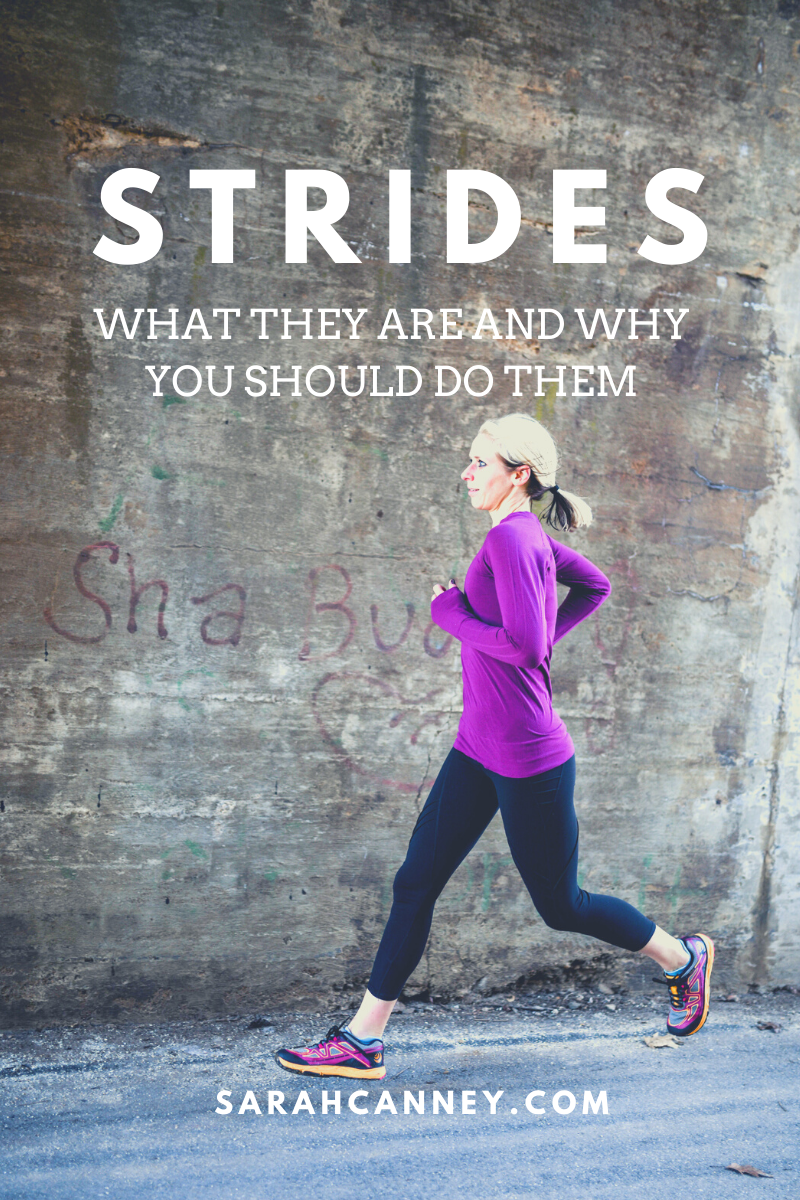Strides: What are they and Why you should do them
Sometimes you hear running lingo tossed around, but have no idea what it really means. Like strides. What exactly are they and why do runners do them? Finding out what strides are and how they can help you can really contribute positively to you running, whether you consider yourself "fast" or not.
What are Strides?
Strides are periods of running that incorporate a short burst of fast running at a sub-maximal effort. Let's break that down even more. A "stride" can be anywhere from 50 meters to 100 meters in total length (think the straightaway of the track or the distance between two telephone polls or the distance back and forth in front of your house). To run a stride break that distance into thirds: in the first third jog and slowly build speed, in the middle third run fast at 80-90 percent of max effort or just below what a sprint would feel like, and in the final third decelerate back down to a jog. To "run strides" you would run several sets of these thirds, walking around for 20-30 seconds after the completion of the stride to recover before running the next stride.
What are strides and exactly why should I run them?
[Tweet "What exactly are strides and why should I do them? @runfargirl breaks it down #runchat #training"]
Why Should I do them?
Strides are essential for every runner, whether or not you consider yourself "fast" or "competitive" and here's why:
Strides Build Foot Strength: When running fast, either for the duration of a race or in a short sprint to the finish, you're form and foot strike are different than when you run slow. You run more erect, you feet turnover more quickly and you push off from the balls of your feet.
Helps Prevent Injury: Running strides, especially running strides barefoot on a soft surface like sand or a turf field, can help build overall foot strength and prevent injury. Running strides as a precursor to more intense track workouts can help prepare your body for the stress of faster running: ligaments, tendons and muscles that are recruited during fast running have a chance to adapt. If you've had some time off from running speed work consider several week so of stride workouts to prepare you.
Increases Foot Turn-Over: If you want to run faster, your feet have to turn over more quickly. Running strides strengthens the neuromuscular pathways for faster turnover and therefor faster running. Running strides on a slight decline can really aid in getting a faster turnover rate.
Encourages Proper Running Form: When we run faster our form and stride naturally become more efficient, or at least to a certain extent within the limitations of your biomechanics. Running strides can help develop better running form by encouraging you to forefoot strike, run erect, and turn over your feet more quickly.
How Should I do them?
Strides can be done on the track, on the road, barefoot on the beach, or barefoot on a field (be sure the field is safe and free of debris beforehand). You can perform them before a hard track workout as a warm-up or after an easy run. Strides are also a great way to return to speed workout after some time off (think injury or pregnancy/postpartum). Here's a great stride workout to incorporate into your weekly schedule as a precursor to intervals if you're coming back from a break:
10 min warm-up
2 x 10, 20 seconds strides with 40 seconds rest between each stride and 5 min rest between sets
10 min cooldown
45 min total for the workout
-Sarah

